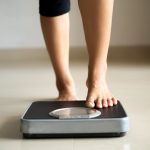
A second injectable diabetes drug has been approved for weight loss in overweight and obese adults, the U.S. Food and Drug Administration announced Wednesday. The weight-loss drug Zepbound contains the same active ingredient, tirzepatide, as the diabetes drug Mounjaro. Both medications are made by Eli Lilly and Co. “Obesity and overweight are serious conditions that can be associated with some of the leading causes of death such as heart disease, stroke and diabetes,” Dr. John Sharretts, director of the Division of Diabetes, Lipid Disorders, and Obesity in the FDA’s Center for Drug Evaluation and Research, said in an agency news release. “In light of increasing rates of both obesity and overweight in the United States, today’s approval addresses an unmet medical need.” The approval mirrors the FDA’s earlier approval of Wegovy to treat obesity. That blockbuster drug contains the same active ingredient as the diabetes drug Ozempic. About 7 in 10 American adults are overweight or obese, the FDA said, and many of those folks have at least one weight-related health risk, such as high blood pressure, type 2 diabetes or elevated cholesterol levels. Losing 5% to 10% of body weight has been associated with a reduced risk of heart disease in adults carrying excess weight, the FDA added. Zepbound works by activating hormone receptors in the body to reduce appetite and food intake, the… read on > read on >


















